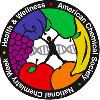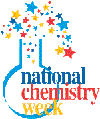Preventing Infections: Electronic Resources
This is a collection of electronic resources (websites, software, etc.) about preventing infections. A separate collection of Print Resources is also available.
Key: E = Elementary (K–5), I = Intermediate (6–8), HS = High School (9–12), C = College, G = General Public
Starting Points
- Clean Hands, from Georgia-Pacific Health Smart. (E, I, HS)
- Food Safety Links — Hand Washing, from the U.S. Department of Agriculture. (G)
- For Kids, Teens, & Educators, from the U.S. Food and Drug Administration. (E, I, HS)
- Stalking the Mysterious Microbe!, from the American Society for Microbiology. (E, I, HS)
- BAM! Body and Mind, from the Centers for Disease Control and Prevention (CDC). (I, HS)
- This site gives kids the information they need to make healthy lifestyle choices. The site focuses on topics that kids told us are important to them such as stress and physical fitness — using kid-friendly lingo, games, quizzes, and other interactive features. Check out “Disease Detectives” as they track down the sources of disease — from gross germs to bad habits — and stop them from happening.
- The Big Picture Book of Viruses, from Tulane University. (HS, C, G)
- Curly, spiked, thready, soccer-ball-shaped — nearly every kind of virus is depicted and described at this remarkable site, put together by Robert F. Garry, a professor at Tulane University School of Medicine, and members of his lab. For convenience, the catalogue is indexed in several ways: you can look up your favorite bug or browse the collection by family name, virus name, genome type or structure. In addition, the viruses are grouped according to the hosts they infect and the diseases they cause. This constantly updated, heavily linked site also offers virology news, an online bookshop and a listing of online virology courses. Even if you only have a passing interest in, say, ebola or the common cold, it’s worth a quick visit. Source: 2001 Sci/Tech Web Awards: Medicine
- BioInteractive, from Howard Hughes Medical Institute. (HS, C, G)
- The world of biology to truly comes to life at this site, brought to you by the Howard Hughes Medical Institute. Watch extraordinary 3-D QuickTime animations of a bacterium infecting a cell, the process of meiosis or the sinusoidal wave progression of music chords across your cochlea (a real must-see (and hear) for music, math and bio buffs alike!). The section “Eating and Sleeping” includes a lecture about the biology of obesity. The Virtual Museum includes such multimedia exhibitions as the History of Biological Clockworks and a self-navigating tour through the actual Hearts and Hypertension physical exhibit, on display at HHMI in 1998. Add mini animated primers on electrocardiograms and antibiotics, among other topics, and you’ve got a lively intro to bio that’s both entertaining and artfully arranged. Source: 2003 Sci/Tech Web Awards: Biology
- Clean Hands, from Georgia-Pacific Health Smart. (E, I, HS)
- The National Association of School Nurses and the Georgia-Pacific Health Smart lesson program contains lessons for grades K–12 on core curriculum subjects including health.
- Food Safety Links — Hand Washing, from the U.S. Department of Agriculture. (G)
- A collection of links representing a diverse array of information that may be of interest to those in the food safety field, including teaching materials, website links, fact sheets, manuals, guides, signs, posters, slides and videos.
- FoodSafety.gov, from the FDA’s Center for Food Safety and Applied Nutrition. (I, HS, C, G)
- FoodSafety.gov is a gateway website that provides links to selected
government food safety-related information. Not every government web site
is listed. When more than one government web site provides similar
information, links will be provided to only one or two of those sites. A
steering committee consisting of individuals with different backgrounds
reviews all potential sites for inclusion on the FoodSafety.gov web site.
- Kids, Teens, and Educators, (E, I, HS)
- Consumer Advice > Clean: Handwashing, (E, I, HS, C, G)
- For Kids, Teens, & Educators, from the U.S. Food and Drug Administration. (E, I, HS)
- A list of websites for children, teens and teachers on food safety. There are games, crossword puzzles and other resources for teachers and children.
- Global Health Odyssey Museum — Kid’s Page, from the Center for Disease Control and Prevention. (E, I, HS)
- The CDC has created a special exhibit area at its Atlanta headquarters, thereby opening its doors to the thousands of visitors who request tours of CDC each year. The Kid’s Page for Global Health Odyssey Museum has links to information, games, and activities about infectious diseases. For example, “MedMyst” students of all ages are invited to play an interactive learning adventure. As you enter a futuristic world, you will help solve medical mysteries in infectious diseases.
- Healthy Schools, Healthy People, from the Centers for Disease Control and Prevention, U.S. Department of Health and Human Services and The Soap and Detergent Association. (E, I, HS)
- “Healthy Schools, Healthy People — It’s a SNAP” (School Network for Absenteeism Prevention) is a grassroots, education-based effort to improve health by making hand cleaning an integral part of the school day. SNAP is designed to get the entire school community talking about clean hands by providing tools for incorporating hand hygiene into multiple subject areas and activities. And it’s a great way to get recognition for your school and share your success stories with others!
- KidsHealth, from the Nemours Foundation’s Center for Children’s Health Media. (E, I, HS)
- KidsHealth is the largest and most visited site on the Web providing doctor-approved health information about children from before birth through adolescence. This award-winning site provides families with accurate, up-to-date, and jargon-free health information they can use. It has been on the Web since 1995 — and has been accessed by over 100,000,000 visitors. KidsHealth has separate areas for kids, teens, and parents — each with its own design, age-appropriate content, and tone. There are literally thousands of in-depth features, articles, animations, games, and resources — all original and all developed by experts in the health of children and teens.
- MicrobeWorld, from the American Society of Microbiology. (I, HS, C, G)
- Wherever you’d like to go in the micro-scale universe of bacteria and viruses, here’s your gateway. This American Society of Microbiology site serves as a portal for a trio of nicely done sites on the basics of the topic: one is designed for the general public, another for teachers and a third is intended especially for children. Source: 2002 Sci/Tech Web Awards: Biology
- National Center for Infectious Diseases — Teachers’ Tools for K–12, from the Centers for Disease Control and Prevention. (G)
- The programs and teaching resources on this page help you teach teens and children about many aspects of infectious diseases.
- An Ounce of Prevention Keeps the Germs Away, from the National Center for Infectious Diseases. (I, HS, C, G)
- Being sick does cost too much. Especially since there are some steps you can take to prevent getting sick in the first place.
- Stalking the Mysterious Microbe!, from the American Society for Microbiology. (E, I, HS)
- This site introduces children to the “tiny creatures that individually are too small to be seen with the unaided eye.” These include bacteria, archaea, fungi, protists, and viruses. Also features news, suggested experiments, facts about hand-washing, and information about microbiology careers. From the American Society for Microbiology. Source: Librarians’ Index to the Internet
Copyright © 2004 American Chemical Society


